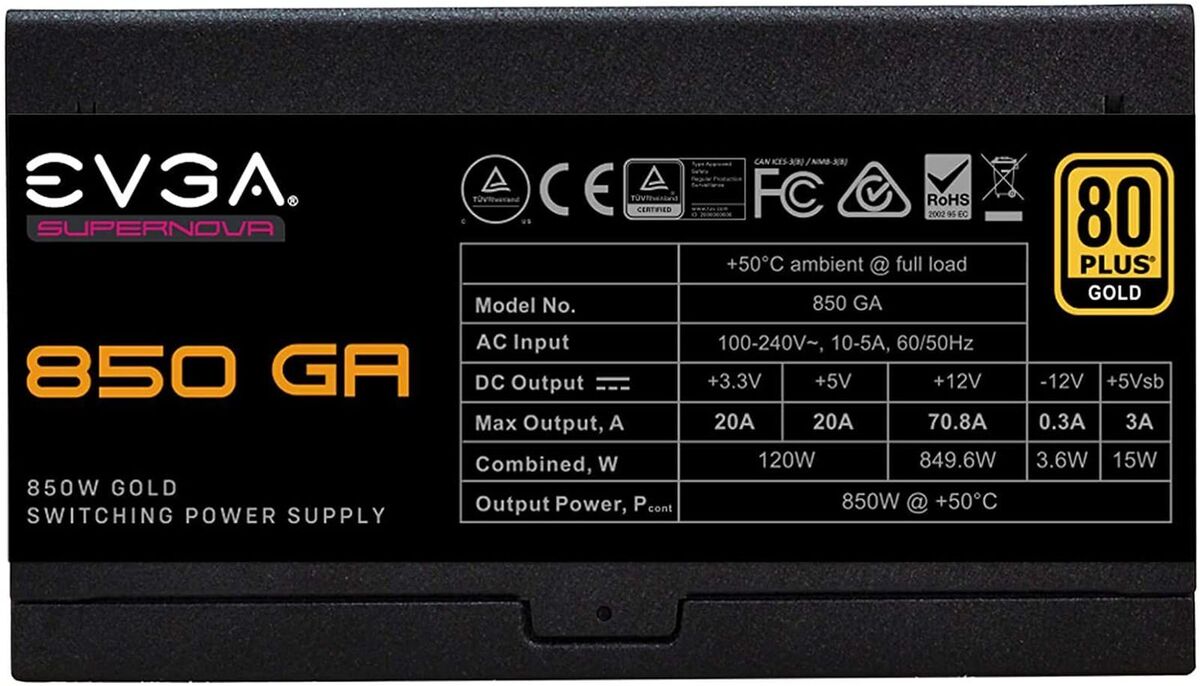How to Check Watts on Computer Power Supply
To check the watts on your computer power supply, you can simply check the label on the power supply unit. Look for the number followed by "W" or "watts" to determine the power output.
When building or upgrading a computer, understanding the power supply wattage is crucial for proper functionality. The power supply unit (PSU) is responsible for delivering the necessary electrical power to all components within the computer. Knowing the watts your PSU can provide helps to ensure that it can sufficiently handle the demands of your system.
Whether you're a novice or a seasoned computer enthusiast, understanding how to check the watts on your computer power supply is essential for optimal performance. Let's explore the simple yet vital process of determining the power output of your computer's PSU.
What Is Computer Power Supply
Computer power supply is a crucial component that provides electrical power to a computer. It converts AC power from the outlet into DC power used by the computer's components.
Components Of A Computer Power Supply
- Rectifier
- Filter
- Power transformer
- Voltage regulator
Importance Of Correct Wattage For System Performance
- Ensures stable power delivery
- Prevents hardware damage
- Optimizes system performance

Credit: www.reddit.com
Determining Your Computer's Power Requirements
Determine your computer's power needs by checking the wattage on the power supply unit. Find the wattage label on the PSU to ensure it meets the requirements of your components. This step is crucial for optimal performance and avoiding system failures.
Calculating Power Needs Based On Components
Determining the power requirements of your computer is crucial to ensure that your power supply unit (PSU) can handle the load. To calculate the power needs of your components, you need to consider the wattage requirements of each individual part.Online Tools And Software For Power Estimation
If you prefer a more convenient and automated approach to calculating your computer's power requirements, there are various online tools and software available. These tools can save time and provide a more accurate estimation based on the components you have selected for your computer build. Here are a few popular options:Checking Wattage On Computer Power Supply
Checking Wattage on Computer Power Supply is crucial for ensuring that your computer is receiving sufficient power to operate efficiently. Understanding the wattage of your power supply is necessary when upgrading components such as the CPU, GPU, or adding additional peripherals. This guide will take you through the process of locating the power supply specifications and using a multimeter to measure the output.
Locating Power Supply Specifications
When checking the wattage on your computer power supply, the first step is to locate the power supply specifications. Typically, this information can be found on a label attached to the power supply unit inside your computer case. The label should display the wattage, voltage, and other important details related to the power supply.
Using A Multimeter To Measure Output
To ensure the accuracy of the power supply's wattage, you can use a multimeter to measure the output. Follow these steps to measure the wattage using a multimeter:
- Ensure safety: Turn off the computer and disconnect it from the power source before proceeding with the measurements.
- Set the multimeter: Set the multimeter to measure DC voltage and select a range that includes the expected output voltage of your power supply.
- Connect the leads: Connect the black lead to the COM port and the red lead to the VΩmA port on the multimeter.
- Measure voltage: Turn on the computer and carefully touch the black lead to a ground point and the red lead to the 12V or 5V rail on the power supply. The multimeter will display the voltage output, allowing you to calculate the wattage using the formula W = V x A, where W is wattage, V is voltage, and A is amperage.

Credit: www.pcworld.com
Interpreting Power Supply Ratings
When it comes to understanding your computer’s power supply, interpreting power supply ratings is essential. By analyzing the wattage, voltage, and amperage ratings, you can ensure the compatibility of your power supply with your computer components.
Understanding Wattage, Voltage, And Amperage Ratings
Wattage, voltage, and amperage ratings are critical aspects to consider when checking a computer power supply. The wattage rating indicates the maximum power the supply can deliver. Voltage ratings specify the electrical potential difference, while amperage ratings denote the current strength
Checking For Compatibility With Components
Ensure the power supply is compatible with your components. Remember, overloading the supply can damage the components and may lead to system malfunction.
Upgrading Your Computer's Power Supply
A computer's power supply is a crucial component that provides electricity to all the other parts of your system. Over time, you may find that your current power supply is struggling to keep up with the demands of your computer. In such cases, it might be necessary to upgrade to a more powerful unit which can handle higher wattage requirements.
Signs That An Upgrade Is Needed
If you're experiencing any of the following signs, it's a clear indication that you should consider upgrading your computer's power supply:
- Your computer randomly shuts down or restarts without any apparent reason. This can be a result of insufficient power being supplied to your components.
- When running resource-intensive programs or games, you notice a significant drop in performance. This is often due to inadequate power supply, resulting in the system not receiving enough power to operate at its peak level.
- You've recently installed new components, such as a high-end graphics card or additional storage drives, and your existing power supply doesn't have enough connectors or the required wattage to support them.
- You're planning on overclocking your processor or graphics card, which increases their power consumption. In this case, upgrading your power supply is crucial to ensure stability and avoid potential damage to your components.
Selecting The Right Power Supply For Your System
When selecting a new power supply for your computer, there are a few key factors to consider:
- Wattage: Determine the power requirements of your components and choose a power supply with enough wattage to accommodate them. It's recommended to add a little extra wattage to ensure stability and allow for future upgrades.
- Efficiency: Look for power supplies with high efficiency ratings, such as 80 Plus Bronze, Silver, Gold, or Platinum. Higher efficiency means less energy wasted as heat and lower electricity bills in the long run.
- Connectors: Ensure that the power supply has all the necessary connectors for your components, including the motherboard, graphics card, and storage drives. Consider any future upgrades you might make and choose a power supply with ample connectors.
- Modularity: Modular power supplies have detachable cables, allowing you to connect only the cables you need. This helps keep your system tidy and reduces cable clutter.
Upgrading your computer's power supply is essential to ensure optimal performance and compatibility with your components. By being mindful of the signs that indicate the need for an upgrade and selecting the right power supply for your system, you can enjoy a stable and efficient computing experience.
Safety Tips For Handling Power Supply
- Unplug the power supply unit before checking watts to avoid electrical shock.
- Keep the power supply unit in a well-ventilated area to prevent overheating.
- Avoid working with wet hands to prevent electric shock.
- Use insulated tools when handling the power supply unit.

Credit: keys.direct
Frequently Asked Questions For How To Check Watts On Computer Power Supply
How To Determine The Power Supply Wattage For My Computer?
To determine the power supply wattage for your computer, check the label on the power supply unit for the wattage information.
What Are The Potential Risks Of Using An Insufficient Power Supply?
Using an insufficient power supply can lead to system instability, crashes, and hardware damage due to inadequate power delivery.
What Are The Steps To Calculate The Total Power Requirements Of A Computer?
To calculate the total power requirements, sum up the wattage of each component like the CPU, GPU, and peripherals, then add some headroom.
Can I Upgrade The Power Supply Of My Computer?
Yes, you can upgrade your computer's power supply to meet the power demands of new components or to improve overall system stability.
Why Is It Important To Check The Wattage Of A Computer Power Supply?
Checking the wattage is important to ensure that the power supply can meet the demands of the computer's components, preventing potential damage.
Conclusion
To conclude, checking the wattage of your computer power supply is essential for ensuring optimal performance and preventing any potential issues. By following the step-by-step guide provided in this blog post, you can easily determine the wattage of your power supply and make informed decisions for upgrades or replacements.
Remember to consider the power requirements of your components and always consult professional advice if needed. With this knowledge, you can keep your computer running smoothly and efficiently.






